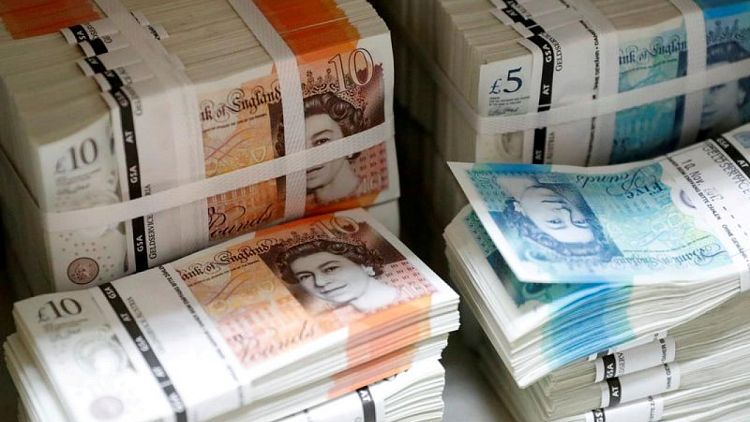By Joice Alves
LONDON - Sterling/dollar implied volatility, a gauge of expected swings embedded in currency options, rose to a seven-month high on Wednesday as soaring energy prices and another jump in British government bond yields hit the currency.
One-month implied volatility rose towards 7.9%, well above volatility levels seen on most other developed currencies -- euro/dollar one-month implied volatility rose to three-month highs but is still at 5.5%.
Graphic: Volatile pound https://fingfx.thomsonreuters.com/gfx/mkt/lgvdwkdyxpo/gbpvol.PNG
"The surge in cable (sterling/dollar) volatility highlights the uncertainty which is currently encapsulating the pound," said Jane Foley, head of FX strategy at Rabobank London.
Sharply rising energy prices have encouraged investors into the dollar, pushing it on Wednesday towards the one-year high touched last week against a basket of currencies.
That knocked sterling 0.4% lower to $1.3565, though it stayed away from the lows hit last week, when it plumbed the lowest since December 2020.
The British currency weakened 0.1% versus the euro to 85.04 pence before recovering to 85.09, having last week hit a two-month low around 86.5 pence.
The prospect of imminent rate hikes, signalled by the Bank of England, was not enough to support sterling, Foley said.
"Higher yields and a hawkish BoE Governor have not been sufficient to convince investors that GBP is a buy, instead it would appear that stagflation is a bigger concern," Foley said.
Britain's supply chains for everything from pork, petrol and poultry to medicines and milk have been strained by shortages of labour.
Wholesale gas prices reached record highs in several contracts on Tuesday amid wider energy market price hikes, ongoing supply concerns, colder weather forecasts and a cut in French nuclear generation due to a strike.
Markets currently price a roughly 90% probability of a 15 basis point rate rise in December and two hikes by June 2022. British gilt yields have shot higher this week, with the 2-year yield touching as much as 0.518% , its highest since February 2020.
Some analysts said, however, that the rate rise expectations were shielding the pound from a bigger fall even as most riskier market segments sold off globally.
"Even though that tightening may ultimately be a policy mistake it looks far too early for that to hit GBP," said ING analysts in a research note.
Better than expected U.S. payrolls data on Wednesday also aided the dollar's rally and fueled expectations the Federal Reserve will push ahead with an announcement in November that it is tapering its asset purchases.



